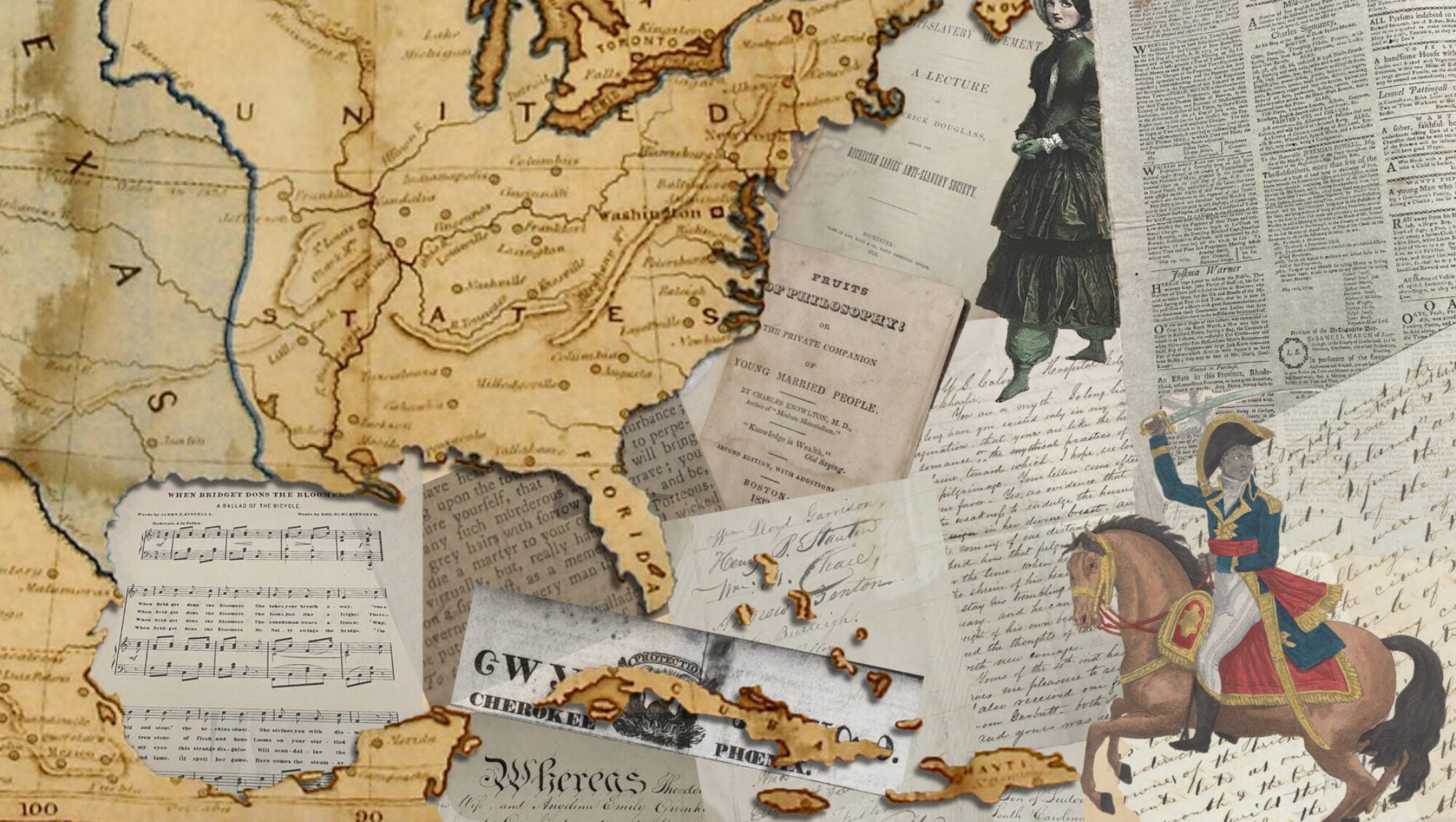How did Native Americans, enslaved and free African Americans, women, and other marginalized people resist various systems of oppression in vast early America? What were the diverse methods and strategies people used to resist colonization, slavery, and patriarchy from the 17th century through the 19th century?
In our undergraduate course, we explored multiple facets and scales of resistance, including resistance through war, revolution, diplomacy, social formations, music, dance, sport, art, material culture, food, commerce, writing, rumor, governance, and movements. We learned that resistance in early American history could be one event or a series of everyday actions, small or large, public, private, or intentionally hidden. We examined the ways in which people challenged or refused physical and societal boundaries and how they maintained cultures in the face of erasure. We saw resistance in joy, reclamation, adaptation, resilience, survivance, and remembrance.
We curated this digital exhibition based on our research at the William L. Clements Library. Sections of the website— War & Revolution, Abolition, Newspapers, and Print Culture—provide windows into resistance in early American history.
Land Acknowledgement
The University of Michigan-Ann Arbor stands upon the ancestral, traditional, and contemporary lands of the Anishinaabeg– The Three Fire Confederacy– of the Ojibwe, Odawa, and Bodéwadmi (Potawatomi) Nations, as well as the Wyandot Nation. In 1817, at the Treaty at the Foot of the Rapids or the Treaty of Fort Meigs, the Ojibwe, Odawa, and Bodéwadmi (Potawatomi) Nations ceded land to the “corporation of the college at Detroit” (the new University of Michigania) “believing they may wish some of their children hereafter educated.”[1] Slaveholding families from Detroit were some of the University’s earliest trustees.[2]
The University did not uphold the treaty obligation contained in Article 16 of the Treaty and did not honor Anishinaabeg contributions for the better part of two centuries. Paul James Johnson filed a lawsuit in 1971 against the University of Michigan as part of an effort to resurface this unfulfilled treaty promise by advocating for free tuition for Anishinaabeg students.
In the Fall of 2023, while we were taking this course, the U-M Museum of Art, the U-M Arts Initiative, and the College of Literature, Science, and the Arts presented an “Arts and Resistance” Theme Semester, which supported many artists and educators in their efforts to share this history. The Museum of Art, for example, featured Cannupa Hanska Luger’s exhibition, GIFT, a clay and limestone wash on the building’s front columns that encouraged viewers to challenge the whitewashing of history at U-M and learn about ongoing settler colonization.
Created by: Zoe J. Waldman and the students of ENG 125 Writing and Academic Inquiry: Resistance in Early American History, Fall 2023:
Ansruta Bohra, Mariah Cooperwood, Alyssa DeSarbo, Akash Fewell, Zachary Geyer, Helena Halucha, Caitlyn Hawley, Niyatee Jain, Vansh Kapoor, Edward Lopez, Xixiang Luo, Oak Soe Naing, Tsumari D. Patterson, Cleo S. Randall, Ari Roth, Isaac Servin, Lilly P. Vydareny, and Dylan T. Wunder
Citations
[1] Treaty of the Foot of the Rapids (Fort Meigs), 1817, “Michigan-Related Treaties 1795-1864,” Clarke Historical Library, Central Michigan University, https://www.cmich.edu/research/clarke-historical-library/explore-collection/explore-online/native-american-material/native-american-treaty-rights/text-of-michigan-related-treaties.
[2] Tiya Miles, The Dawn of Detroit : A Chronicle of Slavery and Freedom in the City of the Straits (New York: The New Press, 2017), 234-36.

